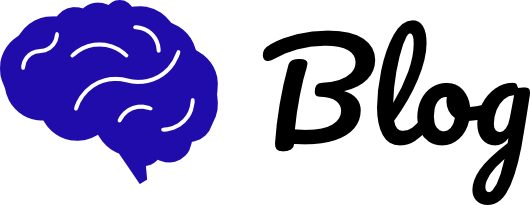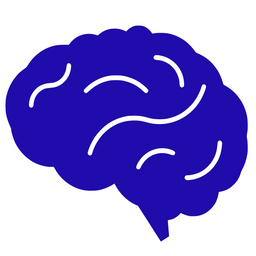What is IA1: the Problem Solving and Modelling task?
The IA1, your first internal assessment for Maths Methods, is a Problem Solving and Modelling Task (we will now refer to it as PSMT). The PSMT tasks are generally based on differentiation and integration topics from Year 12. Your markers are looking to see if you can apply the mathematical concepts you have learned to a more practical real life example. The assessment will propose a situation that you have to make a mathematical model for, and then you will need to use this model to estimate or predict an outcome.
In 2022, I completed a QCE with an ATAR of 98.80. I did both Specialist Maths and Maths Methods, and subsequently was faced with lots of PSMT assignments in my senior years. With this practice, I was able to score top marks for my IA1 PSMT and I am going to share the strategies I learned here.
So, how do you start?
Read your task sheet!
This may seem obvious, but your teacher will list everything you are required to do within this document. Pay special attention to the topic the task is based on and make sure that you understand its real-world implications. I recommend spending time highlighting and underlining key information in your assignment sheet as well as looking at the marking criteria to know exactly what you are gunning for.
Scaffold your report and plan!
This assignment is often given very little time for completion. Check the due dates and plan to have a good draft to hand in to your teacher for feedback. I would recommend focusing on one stage (i.e. formulate, solve, evaluate and verify, and communication (conclusion)) per day.
Make sure you start with an introduction that outlines the task that will be achieved in the report. If your teacher hasn’t told you how to structure your report, it is a good idea to separate the sections based on the dot points in the ISMG. For example, list your assumptions and observations under separate headings so the marker knows exactly what they are looking at.
Make your observations
Read the task again and highlight anything that stands out to you. Observations are often requirements that the model must adhere to, such as a certain measurement. Look for all the values you are given in the task description.
Make your assumptions
Unlike observations, assumptions aren’t listed on the task sheet. Instead, you have to come up with these on your own. Assumptions are often based on how realistic the model needs to be. These may require a quick Google search to find a real-life value that you can base further calculations on. Remember to reference this!!
For a high mark, make sure you have at least three quality assumptions!
Mathematical concepts, techniques and technology
This is where you can list all the formulas and theories you expect to use in your calculations to solve the problem.
For technology, if you are graphing functions, use Desmos. If you are simulating something or making many calculations at once, use Excel (or another spreadsheet program like google sheets).
Now you’re ready to solve!
Understanding the ISMG
Mark your work against the ISMG! When reading through your report ask yourself whether your work has the high-level characteristics outlined, such as “Did I document appropriate assumptions?” Do this from the moment you start working on the report!
The main differences between a top-scoring report and an average one are the complexity and accuracy. You need to be mathematically justifying your decisions, evaluating the results and accurately solving the problem. As such, it is important to not just get the ‘right’ answer but to constantly evaluate and look for improvements and extensions to your model.
Help! My model doesn’t work!
Maybe the result of your model is unrealistic or you do not get the most ideal outcome.
Having a second model in your PSMT is a great way of showing your markers that you have more depth and understand the original task. You are also able to show your knowledge of a larger variety of mathematical concepts by using another equation or theory. Keep the first model in your report to show your evaluation of the result!
Concluding well
To end the report, make sure you have discussed the reasonableness, strengths and limitations of your final model. Your conclusion doesn’t have to be very long but should include an explanation of the models used and the outcome. Ensure you answer the task sheet question and refer to the introduction.

Some final tips and tricks
- Use an appendix for any extra content. For example, if you are repeating a calculation over and over again, you can put the first calculation in the report and all the rest in the appendix. This shows the marker that you know what you’re doing but also doesn’t waste your precious space or words.
- Ask questions and listen to what your teacher says about the task, especially if the task seems vague or not fully explained. Teachers will often tell you what they expect to see in a top-scoring report, such as a certain format or the number of assumptions.
- If you’re struggling with too many words, try to use tables to organise and explain calculations or strategically list improvements and extensions.
Ultimately, remember that this task does not have a ‘right’ answer. The marker is looking for evidence of your critical thinking, justified decision making, and ability to test and evaluate solutions.

Frequently Asked Questions (FAQs)
Where can I find an example of a PSMT?
Have a look at the annotated high-level PSMT example on the QCAA website. This will help you figure out how to structure your assessment and help you understand the marking process.
How do I explain the strengths and limitations of my model?
For strengths, you can explain how well the model accurately predicts a value or finds the best outcome. Often limitations are unrealistic results, due to constraints on the model from the original assumptions and observations.
How much are the IA1 marks weighted?
The IA1 is worth 20% of your year 12 Maths Methods grade.

Written by KIS Academics Tutor for QCAA Maths Methods, Specialist Maths, Physics and Chemistry, Anushka Haydon. Anushka is currently pursuing a Bachelor of Chemical Engineering. You can view Anushka’s profile here and request her as a tutor.
Want more personalised study guidance? A private tutor can make the biggest difference!








